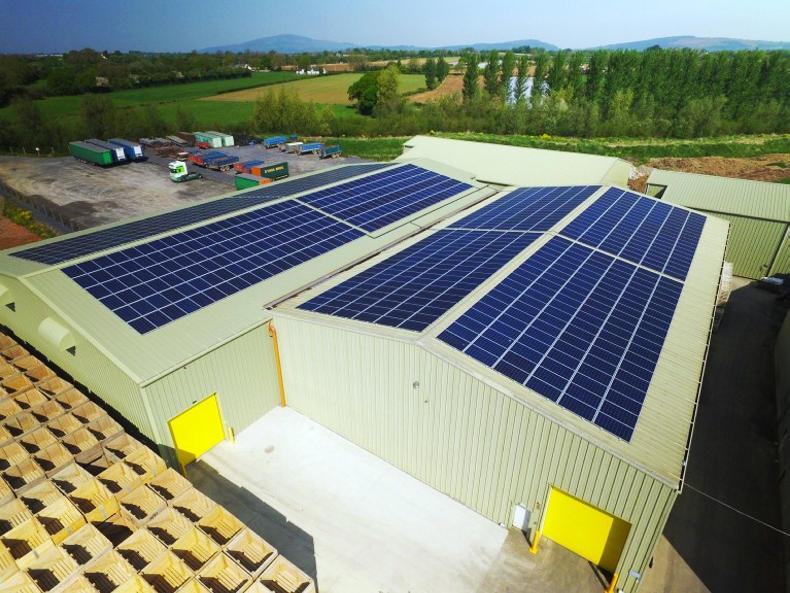In October 2015, Tommy O’Shea had 960 solar panels installed on the roofs of sheds at O’Shea Farms, his family’s vegetable growing and packing business in Piltown, Co Kilkenny.
“We’re a big electricity user with refrigeration, packing lines and lighting,” he said.
After improving insulation and upgrading refrigeration units and lamps, the next logical step to reduce power bills and environmental impact was solar, with large areas of roof space available.
Listen to "Solar power for Kilkenny vegetable farm" on Spreaker.
Their east-west orientation is not as good as a south-facing one, but delivers constant power throughout the day, Tommy explained.
The installation cost €250,000, including eight inverters in a small room and infrastructure to connect the system to the ESB grid.
At the farm’s current electricity rates, it will take 10 years to pay back. In its first year, the solar installation delivered 205MWh out of the expected 208MWh and covered 11% of the farm’s needs.
Tommy says O’Shea Farms has space for more panels, but it would not be economical to install them until small-scale electricity producers are allowed to sell their surplus power to the grid at times when their supply exceeds their needs.
At the moment, the ESB takes in any surplus but does not pay for it. “If a tariff was brought in for autogeneration, it would make the whole thing a lot more viable,” Tommy said.






 This is a subscriber-only article
This is a subscriber-only article










SHARING OPTIONS: